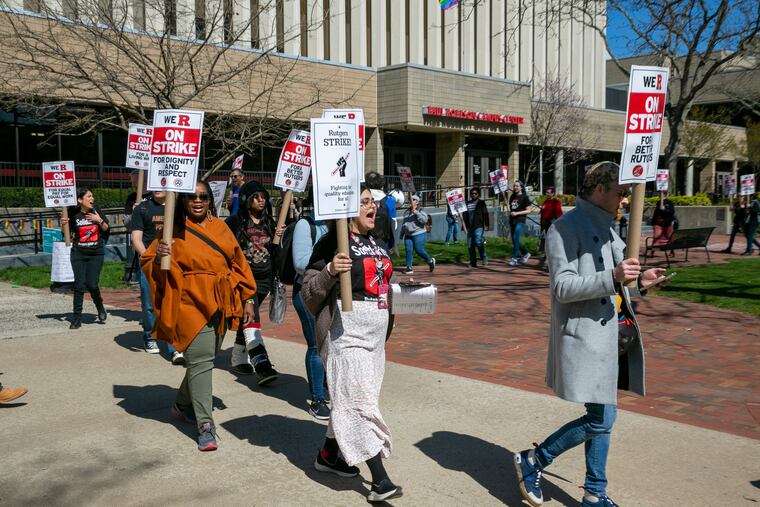Union membership rates dropped to an all-time low last year nationwide. Pennsylvania’s increased.
U.S. union membership rate dropped to 1 in 10 workers in 2023.

The percentage of workers who were union members hit an all-time low last year nationwide. But in Pennsylvania, where the percentage of union members is higher than the national average, rates are up since 2022, according to new data released by the Bureau of Labor Statistics last week.
U.S. union membership rate dropped to 1 in 10 workers in 2023 compared to around 2 in 10 workers in 1983 when BLS first started recording this data.
In Pennsylvania, the rate of union membership increased in 2023 from 12.7% to 12.9%, placing it in a group of 19 states that had higher rates than the national average. The increase also coincides with the state gaining more workers in the last year.
While the country’s rate of union membership has consistently decreased since 1983, approval of unions was at its highest in 2022 since 1965 according to data from Gallup.
Pennsylvania’s rise in union membership in 2023 coincides with a year that was filled with the formation of new unions, several strikes, and many historic steps for organized labor in the Philadelphia region.
Some highlights include:
At Rutgers University, a historic precedent was set in April when the unions representing 9,000 faculty and graduate student workers went on strike for the first time in over 250 years.
Then in May, residents and fellows in the University of Pennsylvania Health System voted to unionize, making the group of 1,400 professionals the biggest new union in Philadelphia in over 50 years, and the first group of training doctors to unionize in the state.
Philadelphia saw union activity among many of its local coffee shops in 2023. Good Karma Cafe workers voted to unionize in 2022 but then voted to get rid of their union in September of 2023 after slow progress on a first contract.
Actions taken by unions in the area also reflected national efforts.
In the summer, about 5,000 UPS workers in the Philadelphia region held picket practice, as workers across the country got ready for a strike.
Employees at an Amazon fulfillment center in West Deptford walked out on Cyber Monday, demanding better pay and working conditions — a concerted organizing effort with other states.
The Starbucks in University City at 39th and Walnut Streets filed a petition to unionize in November, on the company’s annual Red Cup Day when workers at over 200 locations walked off the job.
Here are four takeaways from the state of union membership in the country, according to recent BLS data for 2023:
Men are more likely to be union members
Workers of different genders, races, and ethnicities, and ages experienced different rates of union membership last year. Men were more likely to be part of a union than women with a union member rate of 10.5% compared to 9.5% in 2023. Black workers had a higher union membership rate than Asian, Hispanic, or white workers last year at 11.8%, continuing a pattern seen in 2022. The largest percentage of union members were between 45 to 54 years old.
Industries with the most union members
Since 1983, the rate of union members has generally decreased in the private sector, while the rate had remained similar in the public sector until 2011.
In 2023, 32.5% of workers in public sector jobs, such as police officers, firefighters, and teachers, were union members compared to 36.7% in 1983. Although the private sector gained almost 200,000 union members last year, only 6% of workers overall in the private sector were union members. In 1983, workers in the private sector that were not in agriculture industries had a union membership rate of 16.8%.
Hawaii has the highest rate of union members
In 2023, 31 states and Washington, D.C., reported union membership rates that were lower than the national average. South Carolina had the lowest union membership rate, while Hawaii and New York had the highest rates in the country. Last year, nearly 30% of union members nationwide lived in California and New York.
$173 more a week
Nonunion members made less money last year than union members when comparing the usual weekly median paycheck. Nonunion members had median weekly earnings of $1,090 compared to union workers who made $1,263.